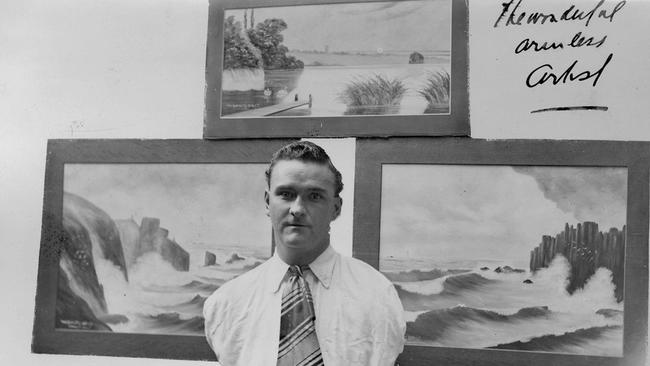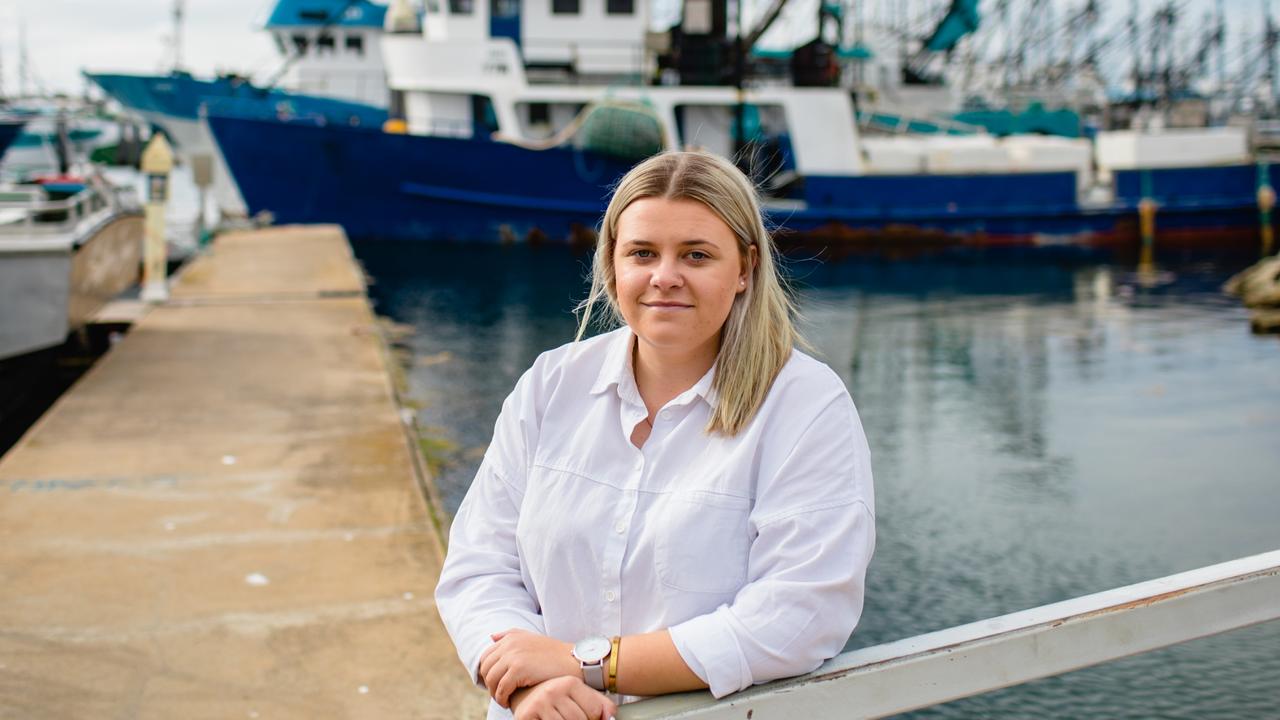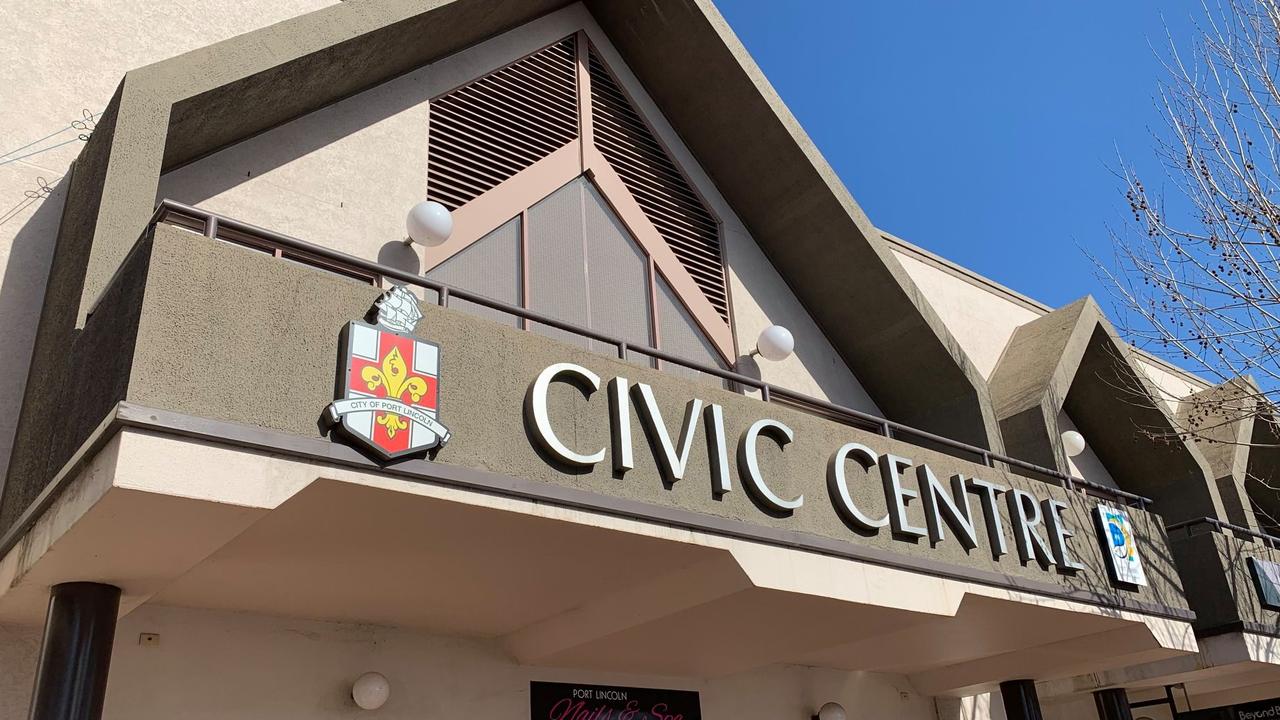Podcast: The fascinating true story of William Smith, Adelaide’s ‘Armless Artist’
WILLIAM Smith may just be the most fascinating South Australian artist you’ve never heard of. We explore his story in a new local history podcast. LISTEN.

CONSIDER the talent and the passion it takes to become a truly great painter.
Now just think about the grit and determination required to do it without arms.
This is the incredible true story of William Smith — the most famous South Australian artist you’ve likely never heard of.
Born in Adelaide in 1887, William Joseph George Smyth (later Smith) started life against the odds, even for the brutish terms of life in 19th Century Australia.
HEAPS GOOD HISTORY: DOWNLOAD ON ITUNES
At just three months old his mother, Ellen Sophia Warhurst, died and with his father Samuel in and out of prison, Smith was shipped off to the Industrial School at Magill.
Eventually he was boarded out to live with an elderly widow, Sarah Spence, in Glenelg — where a schoolyard accident would change the course of his life profoundly and forever.
Smith, then aged nine, tragically fell from a tree at Glenelg Public School, badly breaking both arms, which, after 20 operations were finally amputated.
At the age of 16, a subsidy Mrs Spence had been receiving to care for Smith expired and so he was sent to live at the Destitute Asylum, a precursor to the modern welfare system.
Here, Smith’s life took another major turning point after he taught himself to paint using a brush gripped between his teeth.
Smith’s unique style soon caught the attention of Advertiser journalist Frank Rust, who in 1904, helped launch a public campaign to raise funds for him to leave the asylum and take lessons with renowned SA painter James Ashton.
Smith went on to have a career as an artist, travelling all over Australia and New Zealand painting landscapes and postcards.
Nikki Sullivan, a curator at the Migration Museum, says she discovered Smith’s extraordinary story while researching the Destitute Asylum where the museum now stands.
![“The Armless Artist” William Smith in 1918. Picture State Library of South Australia [PRG 280/1/7/65]](https://content.api.news/v3/images/bin/209d1e4e6a8eab9214c831c94ac81b7a)
“He caught my attention and I felt like I needed to know more about what had happened to him, how it was that he’d lost his arms, how it was that he’d ended up in the Destitute Asylum,” Sullivan says.
“And it’s a fascinating story, we now include his story in one of our galleries.”
“In this period a lot of people in the Destitute Asylum where there because they couldn’t work, because they were infirm in once sense or another so that could have been his life.
“But I think with some determination and some luck he managed to pull himself out of that situation and really to make quite a successful life for himself.”
“His first tutor was allegedly somebody who really encouraged him to never give up and to try anything he could so initially he did start to try painting with his feet but didn’t find that that worked for him and so then tried with his mouth.”
Sullivan says Smith was only “moderately successful” as a professional painter but that he was able to combine his artistic skill with his disability to make a comfortable living for himself.
“He didn’t just show his work, he always put on a show.

“He would actually do a demonstration for people and I think he felt like that probably connected him to people in a way that just seeing pictures on a wall might not.”
“Some of the things that he did at the beach were lovely, they were souvenir pieces and they would say things like ‘a souvenir from Manly’ and it would have a little photograph of him and then he would paint a little bird or something underneath it.
“He could do these relatively quickly”.
She says all South Australians should know and learn from Smith’s extraordinary struggle.
“I think that we should be really supportive of people who I guess are successful against the odds, who don’t give up.
“I mean I don’t want to fetishise William but on the other hand I want to say, look here was somebody who could have ended up having a life that was really awful — and some awful things happened to him — but the lesson that can take away from him is that life goes on if you are willing to make an effort — and he clearly did.
“But also he was also helped by other people and that’s another thing for us to take away. “Helping people can change a life”.
Do you know more about the ‘Armless Artist’, have any of his paintings or believe you may be a descendant? Contact Nikki Sullivan at The Migration Museum.
If you enjoyed the first episode in The Advertiser’s South Australian Stories podcast, tweet @GregBarila or email Greg here.
You can also download the Heaps Good History podcast from iTunes to listen on the go.
Originally published as Podcast: The fascinating true story of William Smith, Adelaide’s ‘Armless Artist’




